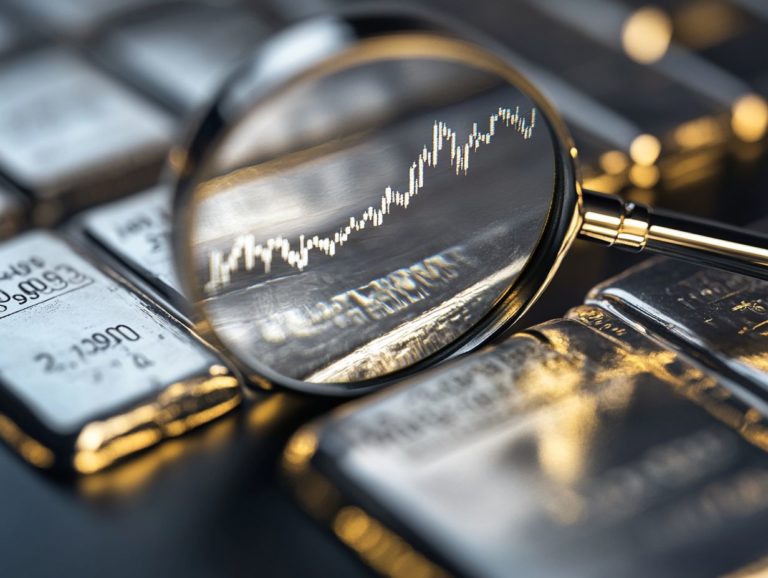Platinum Prices: Historical Trends Explained
Platinum, frequently eclipsed by the allure of gold and silver, has a unique place in the precious metals market.
Understanding the factors behind platinum pricing is vital for both investors and enthusiasts. This article delves into the various elements that influence platinum prices, exploring historical trends and pivotal events that have shaped its value over time.
You ll discover key considerations when investing in platinum. Draw comparisons with other precious metals and gain insights into its future potential. Don t miss out on the potential of platinum investments!
Contents
Key Takeaways:
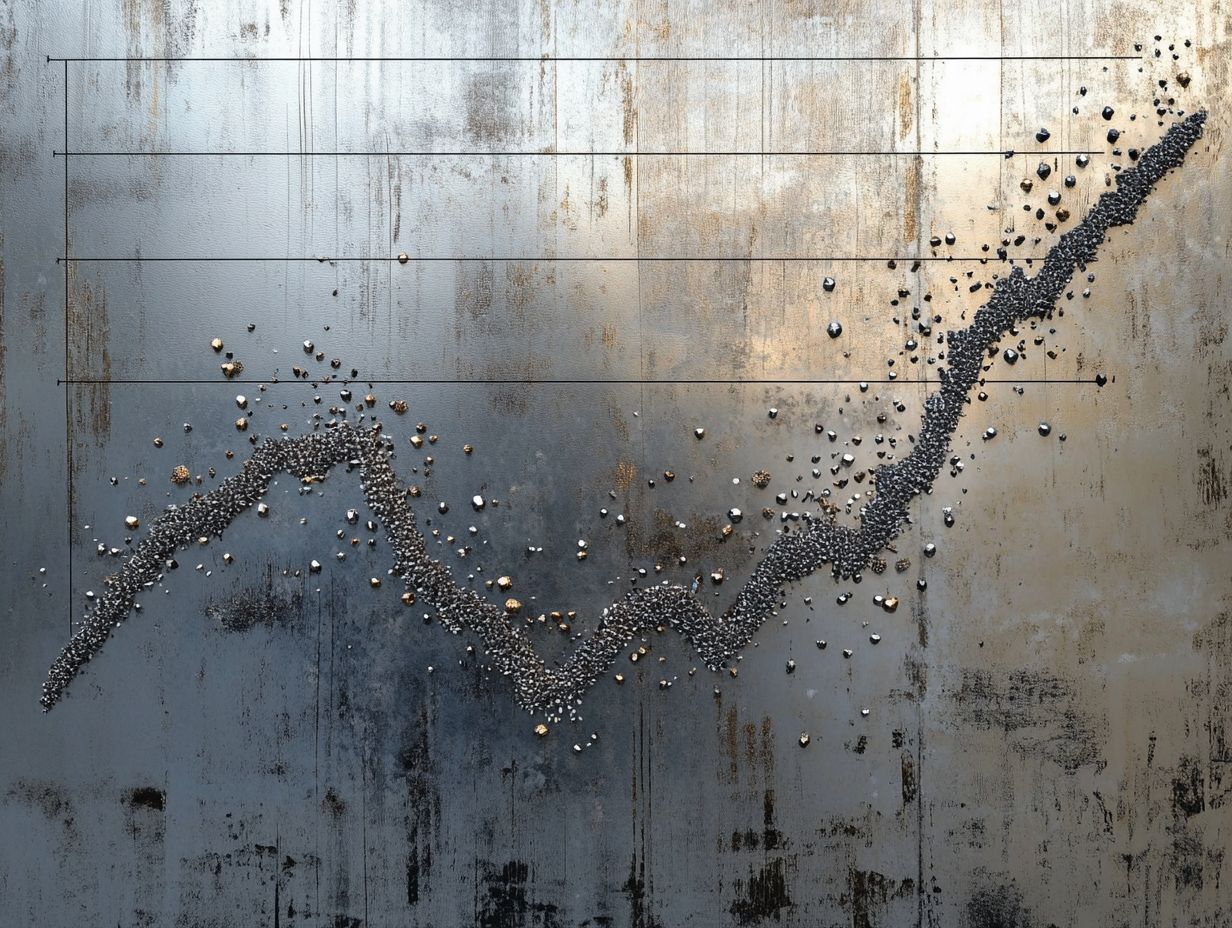
- Platinum prices are influenced by a variety of factors, including supply and demand, economic conditions, and global events.
- Major events, such as political upheavals, have historically affected platinum prices.
- Carefully evaluate market conditions and predictions when considering platinum investments.
Understanding Platinum Prices
Understanding platinum prices requires keen analysis of various factors, including market demand, spot price, and economic trends that shape the precious metals sector.
Given that platinum plays a vital role in industrial applications, particularly within the automotive industry through its use in catalytic converters which help reduce harmful emissions from vehicles, any fluctuations in supply and demand will directly influence its pricing. To learn more about this precious metal, check out understanding platinum: characteristics and uses.
If you want to diversify your portfolio, exploring investment opportunities in platinum bullion, bars, and coins is a savvy move. It’s essential to keep an eye on price trends and current values through reliable sources like BullionVault and consider the future of platinum in the next decade to make informed decisions.
What Affects the Price of Platinum?
Several factors significantly influence the price of platinum, including market demand, overall supply dynamics, and production rates in key regions like South Africa and Europe.
One of the most important drivers of these price fluctuations is the rising demand for catalytic converters. As regulations tighten and consumers increasingly opt for environmentally friendly choices, the automotive sector has witnessed a substantial surge in the need for this precious metal.
Production levels have struggled to keep pace, particularly in economically challenged areas, putting additional strain on the market. You ll also notice that recycling trends are shifting, with a greater focus on reclaiming precious metals from used automotive components.
Bullion banks are pivotal in this pricing landscape, speculating on future demand and supply, which adds to the price volatility. Recent economic downturns and changing investor sentiment have further complicated matters, leading to fluctuations that directly impact the platinum market and the growing demand for palladium.
Historical Trends of Platinum Prices
Analyzing historical trends of platinum prices offers profound insights into its value over time. It highlights how economic shifts and significant events have contributed to price volatility in the commodities markets.
By examining price charts and historical data, you can gain a clearer understanding of past fluctuations. This allows you to craft informed strategies for your future investments in platinum, especially by keeping an eye on platinum market trends.
Major Events and Influences
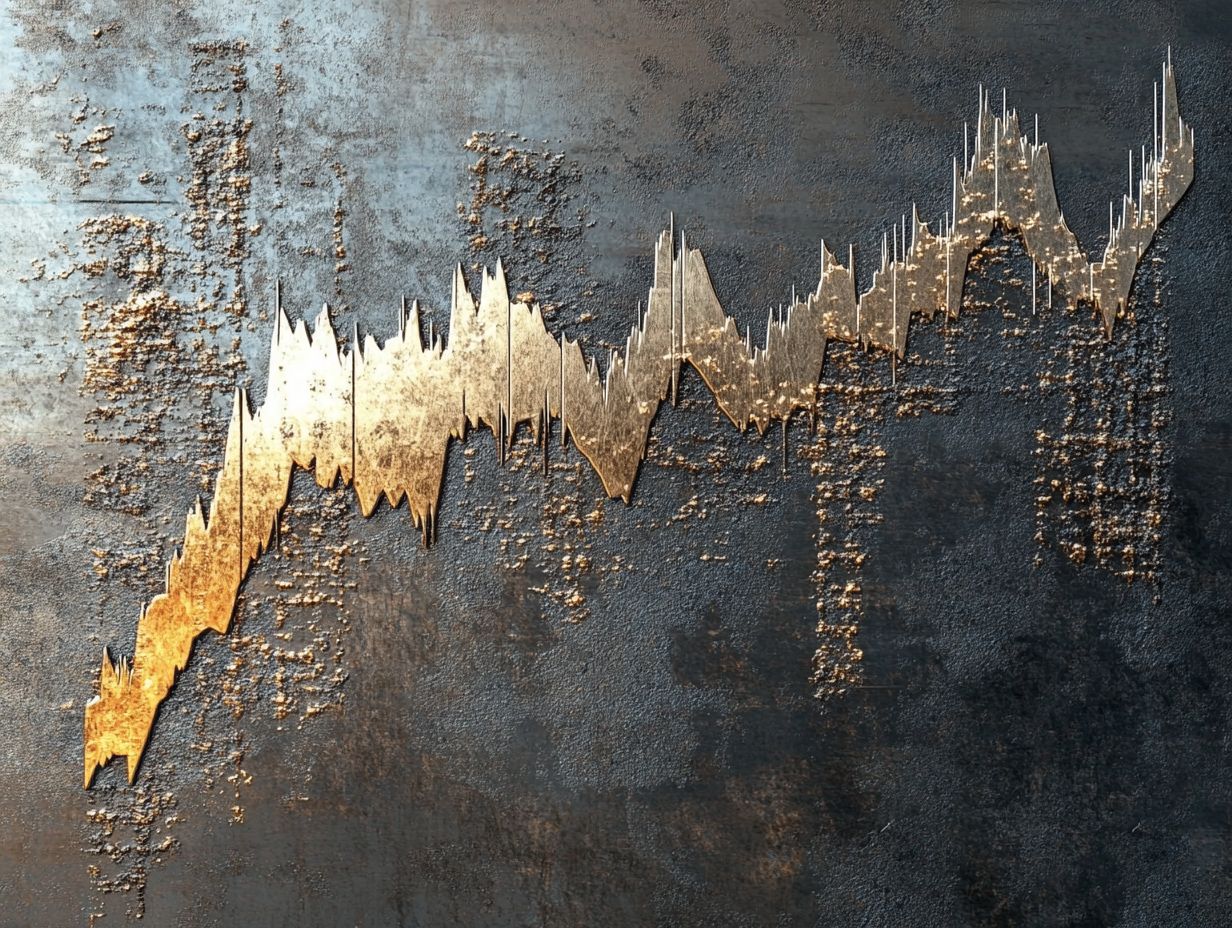
Major events, such as economic shifts, geopolitical tensions, and technological advancements, have profoundly shaped the price of platinum throughout history. These factors have led to notable fluctuations and market speculation.
Take, for instance, the 2008 financial crisis, which triggered a sharp decline in automobile production. This had a direct impact on platinum demand, as this precious metal is essential for devices that reduce car emissions. Fast forward, and the rise of electric vehicles introduced new dynamics, prompting a reevaluation of platinum demand: current trends in the industry.
Recent geopolitical tensions and supply chain disruptions have complicated the landscape, creating uncertainties and potential investment opportunities. Now is the perfect time to explore the platinum market and understand the future of platinum prices! You must navigate these evolving trends carefully, weighing the inherent risks against potential returns.
Factors to Consider When Investing in Platinum
When contemplating an investment in platinum, it’s essential to assess a range of factors. These include current market conditions, future forecasts, and the unique role platinum plays in a diversified investment portfolio.
Understanding price trends, exploring storage options, and familiarizing yourself with platinum auctions can profoundly influence your investment decisions.
Market Conditions and Future Predictions
Current market conditions for platinum show a delicate balance between supply and demand. Future predictions hint at potential shifts influenced by economic trends, price volatility, and investment supply.
Since the automotive sector is a major consumer of platinum, fluctuations in vehicle production and the rise of alternative fuel technologies could significantly impact pricing. Observing trends like the surge of electric vehicles will provide valuable insights into evolving demand patterns.
Economic factors like inflation rates and consumer confidence will shape investor behavior, impacting platinum’s appeal as a hedge.
Staying attuned to live market data and conducting thorough research is essential for you as a stakeholder. This vigilance empowers you to navigate these complexities, allowing for informed decisions and the ability to capitalize on emerging investment opportunities.
Comparing Platinum to Other Precious Metals
When comparing platinum to other precious metals like gold, silver, and palladium, you’ll notice distinct differences in price, market demand, and investment potential. These variations highlight platinum as a truly unique asset in the realm of precious metals.
Price Differences and Investment Potential
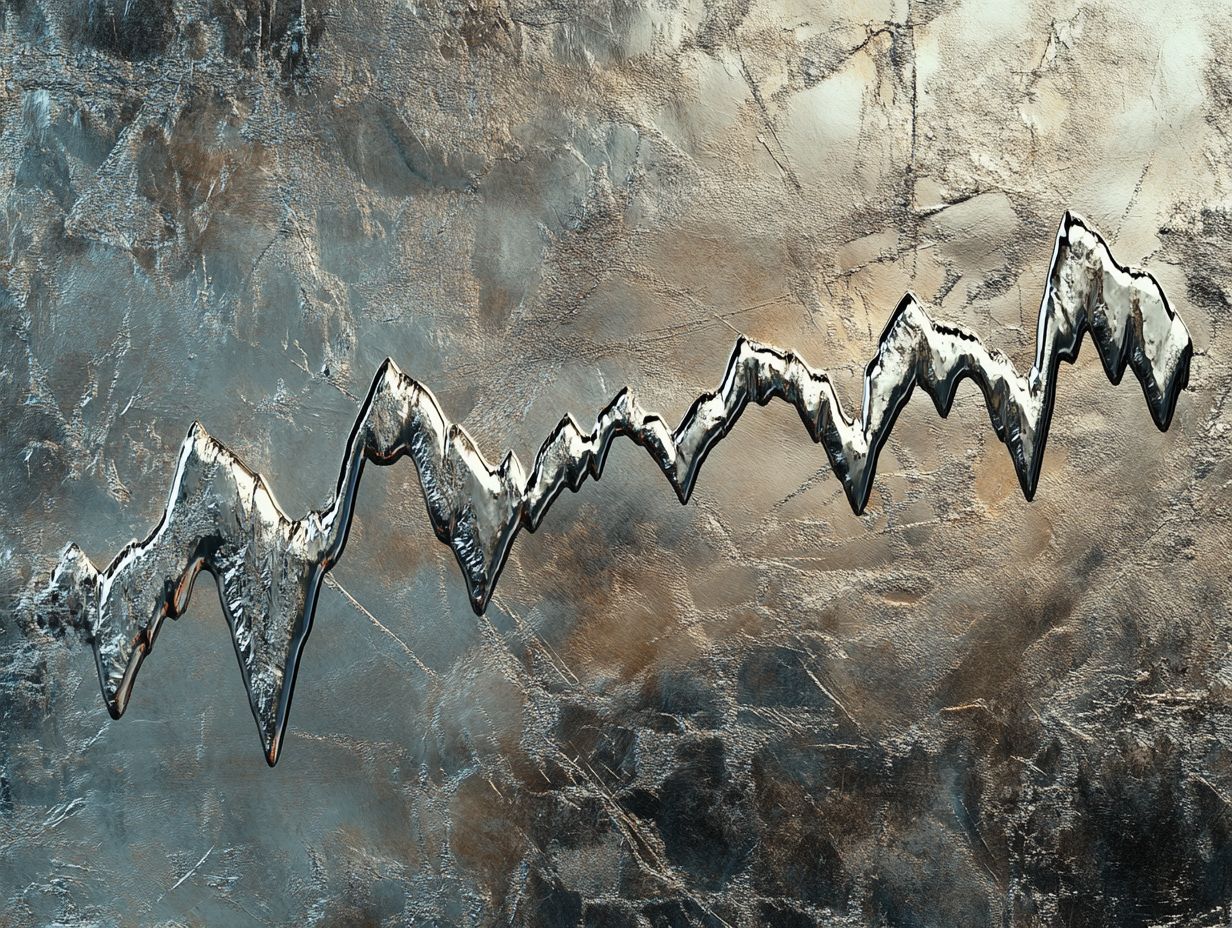
The price differences between platinum, gold, silver, and palladium reveal the unique investment potential inherent in each precious metal, influenced by varying market demand and economic conditions.
These metals aren’t just symbols of wealth; they play crucial roles in various industrial applications. For example, platinum demand is vital for devices that reduce car emissions, while gold and silver are commonly used in jewelry and electronics.
Scarcity significantly affects their values; platinum, being the rarest, often commands higher prices due to its limited supply. Historically, each metal has displayed distinctive performance during economic downturns and recoveries.
By recognizing these nuances, you can strategically allocate your portfolio, leveraging platinum s unique properties and market behavior, especially as environmental regulations tighten and green technologies gain traction.
Frequently Asked Questions
How are platinum prices set?
Platinum prices refer to the value of the precious metal on the global market. These prices are determined by supply and demand, along with economic factors such as inflation and interest rates.
Ready to invest in platinum? Stay informed and make your move now!
Why is platinum considered a valuable metal?
Platinum is valuable because it is rare and durable. It has many uses, including jewelry and industrial processes.
What are some historical trends in platinum prices?
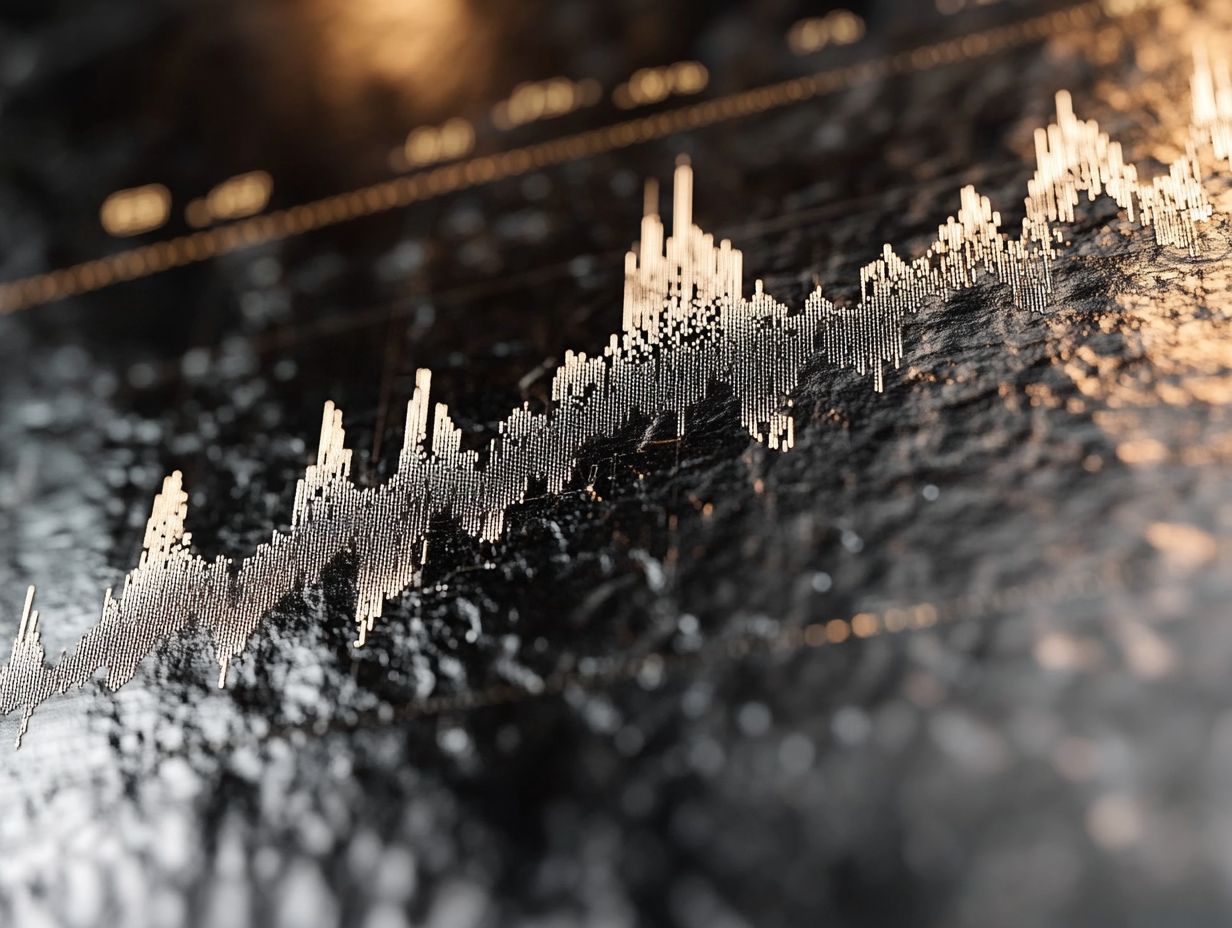
Platinum prices have been unstable due to limited supply and changing demand. Recently, prices dropped but surged in 2020 because of supply issues from the COVID-19 pandemic.
What factors can influence platinum prices?
Prices can change based on supply and demand. New mining discoveries, industrial needs, and economic stability all play a role.
Currency exchange rates and political instability can also affect prices.
How can individuals track platinum prices?
People can follow platinum prices through financial news sites and investment apps. Monitoring related stocks can also provide market insights.
Is investing in platinum a good idea for diversifying a portfolio?
Investing in platinum comes with risks, like any investment. Many experts suggest adding precious metals to a diversified portfolio to protect against rising prices.
Do your research and consult a financial advisor before making decisions.










